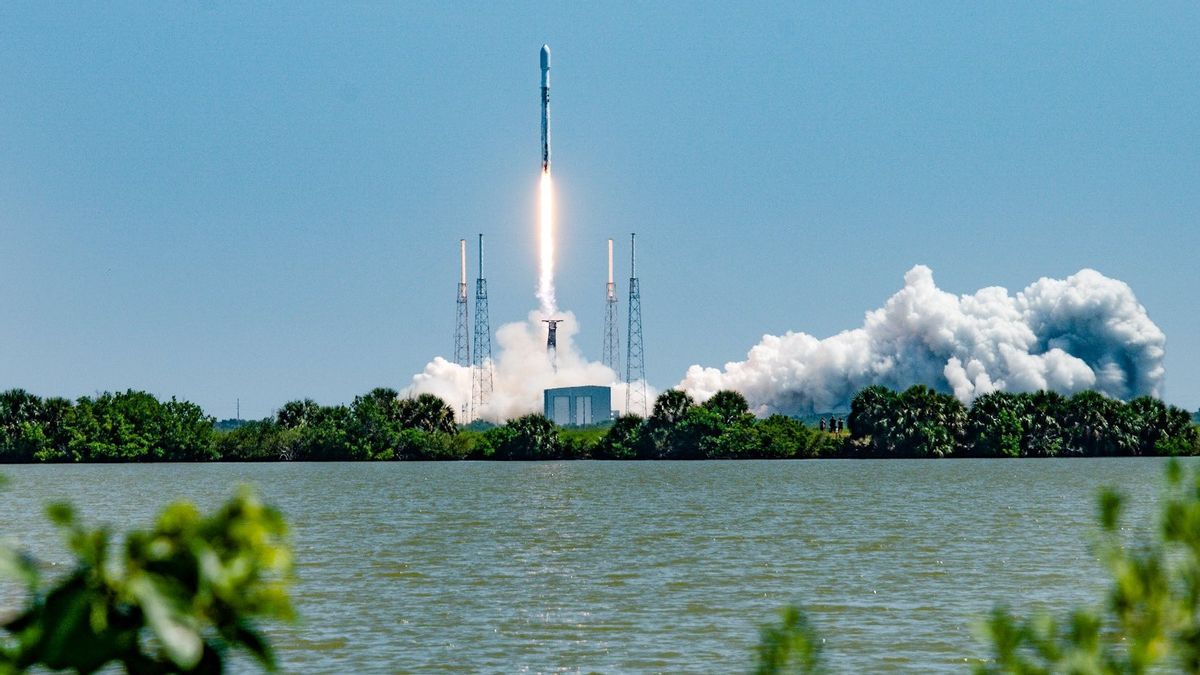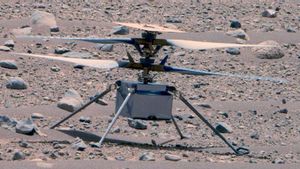JAKARTA - The European Space Agency (ESA) successfully launched the Euclid Space Telescope, designed to reveal the nature of two mysterious components of the universe, dark matter, and dark energy.
Aboard SpaceX's Falcon 9 rocket from the Cape Canaveral Space Force Station, Florida, United States (US), the Euclid Telescope took off at 11:12 a.m. EDT on July 1.
Following the launch and separation from the rocket, the European Space Operations Center (ESOC), ESA in Darmstadt, Germany, confirmed the acquisition of a signal from the Euclid Telescope via the New Norcia ground station in Australia at 11:57 a.m. EDT.
"Euclid's successful launch marks the start of a new scientific endeavor to help us answer one of the most exciting questions in modern science," ESA Director General Josef Aschbacher said in a statement.
"The quest to answer fundamental questions about our cosmos is what makes us human. And, often, that is what drives scientific advances and the development of powerful and far-reaching new technologies."
The telescope is named after the Greek mathematician Euclid of Alexandria, who lived around 300 BC and founded the subject of geometry. Because the density of matter and energy are related to the geometry of the universe, the mission is named in his honor.
The Euclid Telescope is a fully European mission, built and operated by ESA, with contributions from NASA and its international partners.
Exploring the Vast and Dark Universe
Later, the Euclid Telescope will explore the composition and evolution of the dark universe by creating the largest, most accurate 3D map across space and time, and observing billions of galaxies up to 10 billion lightyears across, covering more than a third of the sky.
The telescope will explore how the universe is expanding, find out its large-scale structure distributed across space and time, reveal more about the role of gravity and the overarching nature of energy and dark matter.
From there, ESA astronomers and theorists can deduce the nature of dark energy, dark matter, and gravity to reveal more about the nature of this enigmatic entity.

Tasks in Orbit
After launch, the Euclid Telescope will sail towards the Sun-Earth Lagrange point 2 (L2). Four weeks later, the telescope will enter orbit around that point, which is 1.5 million kilometers from Earth, opposite the Sun.
Once in orbit, mission operators on the ground begin verifying all of the telescope's functions. In that time, the remaining water is removed and then the Euclid Telescope instrument will be turned on.
Between one and three months after launch, the Euclid Telescope will go through several calibrations and scientific performance tests and prepare for its science mission. The telescope began its initial phase of surveying the universe three months after launch.
For six years, the Euclid Telescope will survey a third of the sky with unprecedented accuracy and sensitivity.
Having a height of about 4.7 m and a diameter of 3.7 m, the Euclid Telescope consists of two main components, namely the service module and the payload module.
The payload module consists of a 1.2 m diameter telescope and two scientific instruments, such as the visible wavelength (VIS) camera built by ESA to take very sharp pictures of galaxies across most of the sky.
SEE ALSO:
There is also a Near-Infrared Spectrometer and Photometer (NISP) whose function is to analyze the infrared light of the galaxy with wavelengths to determine its distance accurately. NASA provided the detectors for NISP.
Thanks to this system, the image quality of the Euclid Telescope is at least four times sharper than that achieved by ground-based sky surveys.
Meanwhile, the service module contains the satellite system, namely generation, power distribution, attitude control, data processing electronics, propulsion, telecommand, telemetry, and thermal control.
Controlled from Earth
The Euclid telescope will be controlled from ESOC. To cope with the huge amount of data it will acquire, ESA's Estrack space antenna network has been enhanced.
The data will be analyzed by the Euclid Consortium, which consists of 2.000 scientists, 300 institutions across Europe, the US, Canada, and Japan.
As the mission progresses, Euclid Telescope data will be released annually and made available to the global scientific community via the Science Archive hosted at ESA's European Space Astronomy Center in Spain. This was quoted from Scitech Daily and various sources, Monday, July 3.
The English, Chinese, Japanese, Arabic, and French versions are automatically generated by the AI. So there may still be inaccuracies in translating, please always see Indonesian as our main language. (system supported by DigitalSiber.id)


















